Small-caliber anti-aircraft artillery of the Soviet battleships. 70-K
As mentioned earlier, the "October Revolution" became the first ship of this class in the Soviet navywhich received in 1934 the MZA in the form of four 45-mm 21-K cannons and the same number of four Maxim mounts. The most cursory review of the capabilities of these artillery systems shows their complete inadequacy: they could not effectively defend the ship in any way in 1934, or, especially, during the Second World War. Apparently, therefore, they did not install them at Marat at all. As for the “Paris Commune”, with its modernization, which ended in 1937, three 1-mm 4-Ks were nevertheless installed on the 45st and 21th main-caliber towers.
A certain piquancy of this situation gives the fact that in the same year, these artillery systems with the "October Revolution" were removed for their complete incompetence. However, 21-K did not stay on the “Paris Commune” either, and soon gave way to more advanced artillery systems. By the beginning of World War II, anti-aircraft defense in nearby sectors was built on two main systems: the 37-mm anti-aircraft gun 70-K and the 12,7-mm machine gun DShK.
I must say that in modern historical literature and various publications, the attitude to these art systems is very ambivalent. But first things first.
A bit of history
The history of creating such a setup goes back to the 19 century, when the famous American inventor H.S. Maxim offered the Russian Maritime Department an automatic 37-mm gun. Of course, in those years there was no talk of any anti-aircraft defense, it was assumed that the task of this artillery system would be to combat the enemy’s fast-moving "minosacks". The gun was repeatedly tested and returned to the inventor for revision, but in the end, several such artillery systems were nevertheless acquired and installed on some ships of the Russian Imperial Navy. Nevertheless, they did not get wide distribution, for the reason that they were expensive, complex, not too reliable (including due to the use of cloth tapes, but not only), and generally did not have a big advantage over much cheaper ones Hotchkiss revolving or single-barrel guns of the same caliber. Ultimately, the Obukhov plant received everything necessary for the production of 37-mm automatic guns, but, due to the lack of demand from the military, it did not start mass production.
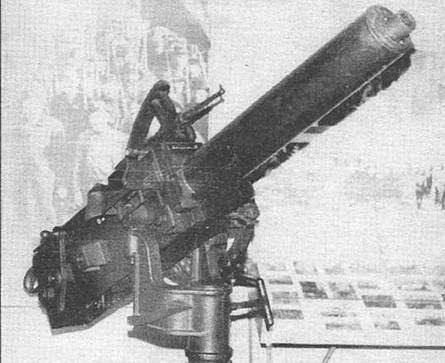
They realized it already in the years of the First World War, when it turned out that Lender’s 76,2-mm guns were not very good in “close combat” against enemy aircraft, while rifle-caliber machine guns were also not sufficiently effective against them. The first did not have enough reaction time (manual installation of the tube, insufficient speed of vertical and horizontal pickup), the second - the effective firing range. In general, the troops needed an automatic gun with a caliber 37-40-mm and a seemingly forgotten X.S. artillery system. Maxima was quite suitable for this role.
So, an order appeared on the autocannons, but the matter did not work out. The fact is that the Obukhovsky plant, in essence, had drawings and accessories, but did not manufacture such artillery systems itself, did not carry out the fine-tuning of the instrument, the eradication of inevitable childhood diseases, etc. The situation was further complicated by the fact that autocannons were needed so urgently that they gave up on military acceptance, and all this led to the expected results: firstly, the Maxim 37-mm automatic gun began to arrive in the army late, and secondly - crude, especially since the Obukhov plant was already overwhelmed with orders, and it seemed that he simply did not have enough power to fine-tune the autocannon.
In addition, the Russian Empire acquired in England and Vickers 40-mm (“pom-pom”) machines, both in finished form and with the possibility of production in Russia: for example, the same Obukhov factory received an order and made a swinging part of the machine Vickers In addition, the Empire in the years of the first world acquired 37-mm Maklen's automata, however, as far as the author knows, without attempting production in Russia.
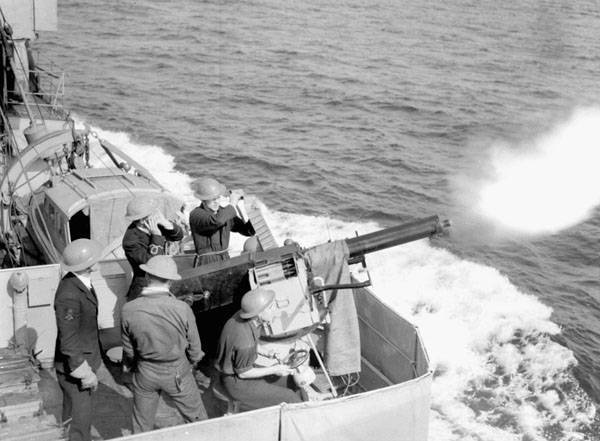
Thus, after the revolution, the Country of Soviets had some groundwork for the production of automatic guns 37-40 mm caliber, and during the civil war even led small-scale production of such artillery systems (10-30 machines) a year, although there is a reasonable opinion that it was only about finishing of parts and spare parts created earlier. It is also not surprising that the first work on the creation of its own automatic anti-aircraft gun was carried out precisely on the basis of the Vickers 40-mm anti-aircraft guns. With this, in 1926, we took up the Bolshevik design bureau.
The directions of modernization were easily guessed, because the “pom-pom” had a number of obvious flaws. First, low power - 40-mm projectile was given the speed of only 601 m / s. In England itself it was even lower, 585 m / s, and only in Italian installations it was slightly higher - 610 m / s. Secondly - low rate of fire. Although the passport "Vikkersy" and could maintain the rate of fire to 200 rds / min. in fact, this figure did not exceed 50-75 vyst / min. And thirdly, of course, there was still the issue of reliability, which product of the British gunsmiths, alas, did not differ.
So, in order to eradicate the first drawback of the Bolshevik design bureau, it was ingenious and simple. Instead of puzzling over how to strengthen the design of the Vickers automatic cannon to provide an increased initial speed, the designers reduced the caliber to 37 mm, which made it possible to give the projectile speed to 670 m / s. The rate of fire was also supposed to increase to 240 rds / min., While the practical rate of fire was expected at the level of 100 rds / min. The result of the work KB received the name "37-mm automatic anti-aircraft gun mod. 1928 g. ", And came to the test in the same 1928 g., But alas, it turned out to be very unreliable. And in any case, it should be understood that even for the end of 20-s its construction, (and “pom pom” essentially was an enlarged machine gun “Maxim”) was already quite archaic and did not have much groundwork for improvement. Still, if the 37-mm cannon arr. 1928 would nevertheless bring it to mind, which was quite realistic, since many of its shortcomings were associated not so much with the artillery system itself, as with ammunition for it, the fleet could get ... Well, let's say, not a modern anti-aircraft gun of course, but still a significantly more effective anti-aircraft artillery system in comparison with the 21-K.
"Guests" from Germany
However, at the end of the 20-s, another decision was made - the production of all anti-aircraft guns should be concentrated at the No. XXUMX plant in Podlipkah near Moscow, and the German 8-mm and 20-mm automatic guns should be used as the basis for their work. Drawings and copies of the latter could be purchased from German firms, which, generally speaking, under the terms of the peace treaties of the First World War, were forbidden to engage in such "creativity." As for the "37-mm automatic anti-aircraft gun arr. 37 g. ”, It was also planned to transfer it to the finishing plant No. 1928, which was supposed to organize its small-scale production.
On the one hand, there were some reasons for all of this - German gunsmiths were famous for their quality, and it was possible to expect that their autocannons would provide the Red Army and the fleet with a much more modern MZA than if the USSR limited itself to working on an 37-mm instrument arr. 1928. But that is why the refinement of the German samples was not transferred to the Bolshevik Design Bureau - it is already more difficult to understand. Of course, it was difficult to call the designers of this design bureau large specialists in the field of automatic guns, but, of course, working on the improvement of the “Pope Poma”, they got some experience. However, in fairness, we note that the engineers from Podlipok were not very far from anti-aircraft artillery - the 76,2-mm anti-aircraft guns their factory produced.
But then it turned out quite interesting. Most modern publications describe the future of the epic as follows: Plant No. XXUMX had at its disposal drawings and samples of first-class artillery systems, which were later adopted by the Wehrmacht and have proven themselves in battles in Spain.
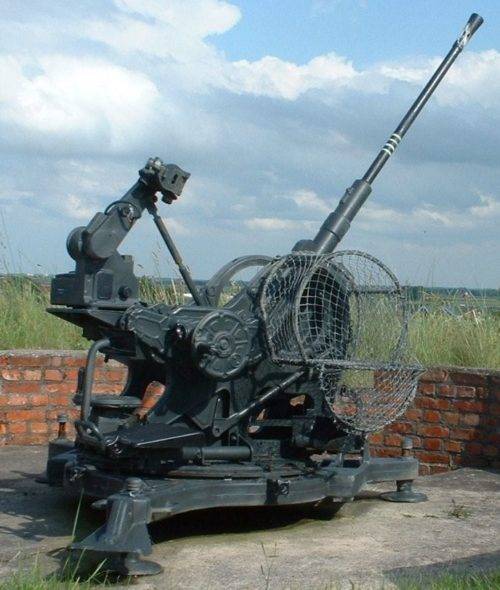
But the “bridesmakers from the Moscow region” could not manage the treasure they got, and failed the serial production of 20-mm and 37-mm machine guns, as a result of which work on the German artillery systems had to be stopped, and in the future to look for other options for creating small-caliber anti-aircraft artillery.
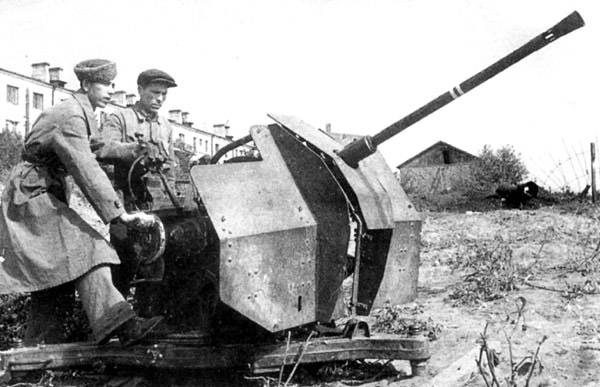
However, there are some nuances. And the first one is that the German documentation and samples were handed over to the representatives of the USSR in 1930, while the Wehrmacht 20-mm and 37-mm automatic guns were received only in 1934, in other words, the Germans had more 4 of the year to improve the design of the 1930 model. At the same time, the author of this article did not find evidence that the 20-mm and 37-mm artillery systems handed over to the USSR and adopted by the Wehrmacht 20-mm FlaK 30 and 37- mm FlaK 18 had an identical design, but in a number of publications is given with ershenno reverse point of view. So, A. Shirokorad, although he criticized the activities of the plant number 8, still pointed out: “So, on the basis of 2-cm guns, the 2-cm Flak 30 installations were created, and on the basis of the 3,7-cm guns - 3,7-cm Flak 18” .
On the base. It turns out that the artillery systems entering the German armed forces were not copies of what they sold in the USSR, but were created on the basis of the latter, and who knows how far the Germans have gone from this base? Strange as it may sound for someone, but we generally have no reason to believe that the guns sold to us were working specimens.
But that is not all. The fact is that many consider the German 2-cm Flak 30 and 3,7-cm Flak 18 excellent anti-aircraft guns, reliable and unpretentious. But according to some other data, they were not at all like that. So, in Spain, the 20-mm Flak 30 turned out to be sensitive to changes in the angle of vertical aiming: at small angles there were many delays due to the incomplete retreat of the machine parts to the rear position. In addition, the gun turned out to be excessively sensitive to dust, dirt and thickening of the lubricant. The technical rate of fire of Flak 30 was very low, amounting to only 245 rds / min., Which by the standards of World War II was categorically insufficient for an artillery system of this caliber. The Germans managed to bring it to reasonable values of 420-480 rds / min only in the Flak 38 modification, the delivery of which to the troops began only in the second half of 1940.
As for the 37-mm Flak 18, it can be assumed that the Germans were not able to achieve reliable operation of automation based on the principle of using recoil energy with a short barrel stroke. One thing is known for certain - the automation of the next 37-mm anti-aircraft gun, which entered the arsenal of the Wehrmacht, worked according to a different scheme.
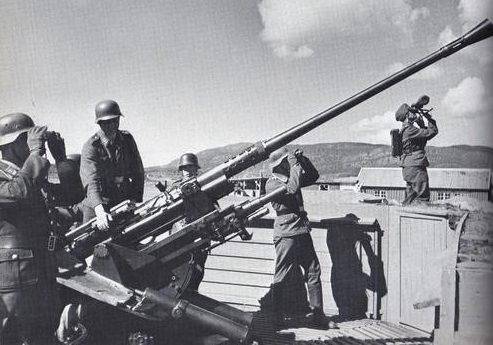
But maybe all of this is wrong and in fact the “gloomy Aryan genius” with Flak 18 succeeded? Then the question arises - how, having a magnificent 37-mm gun with perfectly working automation, the German fleet managed to adopt the 3.7 cm / 83 SK C / 30, which ... was not automatic at all? Yes, you heard right - the full-time 37-mm artillery system of the German fleet was charged almost the same as the Soviet 21-K - one projectile by hand, and had a rate of fire within the 21 rate / min quite similar to the 30-K.
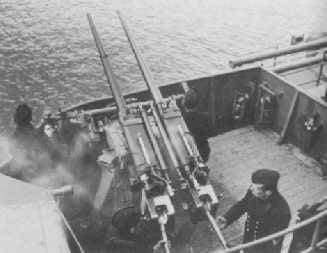
The only difference was that the German 37-mm anti-aircraft gun had an 2 barrel, was stabilized, and informed its projectile of a very high initial speed - 1 000 m / s. But, according to some reports, stabilization did not work too well, and in practice, the Kriegsmarine’s ISA did not achieve much success even when their ships were opposed by such ancient, in general, opponents as the British torpedo bombers “Swordfish”.
The author in no way tries to portray the designers from Podlipok as geniuses of automatic artillery. But, it is quite possible that the failure of the serial production of the 20-mm and 37-mm artillery systems, which we got the names 2-K and 4-K, respectively, was associated not so much with the qualifications of Soviet specialists as with the general dampness and lack of knowledge of German samples.
And what's next?
Alas, the following years can be safely called the “period of timelessness” for the domestic MZA. And not to say that nothing was done - just the opposite, the leadership of the Red Army had an understanding of the need for quick-firing small-caliber artillery, so the designers created a number of rather interesting samples, such as 37-mm AKT-37, ASKON-37, 100-K , “Autocannon” of the Shpitalny of the same caliber, as well as larger 45-mm and even 76-mm artillery systems. There were also attempts to adapt for the needs of air defense 20 mm and 23 mm rapid-fire aviation guns. But all these systems for one reason or another (mainly technical) did not reach the adoption or serial production. The situation began to improve only after the USSR acquired the subsequently famous 40-mm automatic cannon of the Swedish company Bofors - in fact, the story of the 70-K began with this.
37-mm machine 70-K
This was the case - at the end of 1937, plant No. 8 manufactured a prototype of the 45-mm automatic gun, which at that time was called the ZIK-45, and later on the 49-K. It was created on the basis of the acquired Bofors 40-mm installation. Soviet designers did not claim to be exceptional - in the 1938 documents, the gun passed as "a gun of the factory number 8 of the Bofors type."
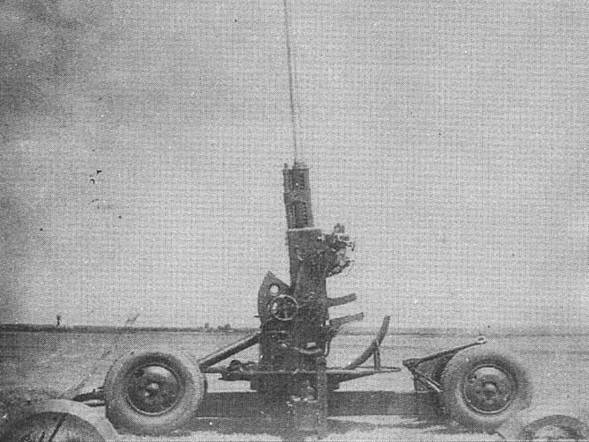
The art system turned out to be promising, but incomplete - the tests demonstrated the need for further improvement of the design, which was done during the 1938-39 period. The results were not slow to affect - if the gun fired 1938 2 rounds and had 101 delays during tests in 55, then in 1939 grenades it had 2 135 rounds and only 14 delays. As a result, the artillery system was adopted in the 1939, and even issued an order for 190 guns for the 1940, but in the second half of the 190, all work on this artillery system was minimized.
The fact is that, despite the fact that the leadership of the Red Army liked the 49-K, the 45-mm caliber was considered excessive for the automatic cannon of the ground forces. The military wanted to get an 37-mm artillery system, and the designers of factory No. 8, of course, were forced to roll up their sleeves. However, the new artillery system did not require much effort - in fact, the 37-mm anti-aircraft machine 61-K was an almost complete copy of the 49-K, adjusted for a smaller caliber.
The resulting machine was not without a number of drawbacks. Such, for example, were considered a big loss of time in the automation cycle (barrel roll-out - cartridge firing - shutter closing), and the relatively free movement of the cartridge in the receiver could lead to distortions in the store and delays in shooting. But in general, 61-K was produced in a large series, and in operation was distinguished by reliable operation of mechanisms and ease of maintenance. This 37-mm machine gun, of course, was not perfect, but nevertheless it was a successful example of an automatic anti-aircraft gun of small caliber and fully met its purpose. And therefore it is not surprising that the fleet chose to get a “numbed” version of 61-K. Fortunately, this time there were no glitches, and in 1940 the serial production of the 37-mm 70-K machine gun began.
Why, in many publications, are both Soviet 37-mm machines, and 61-K and 70-K criticized? There are several reasons for this.
61-K criticism
Firstly, the 61-K “reputation” turned out to be somewhat tainted by the complexity of mastering the machine in the series: alas, the production culture was insufficient at first, which entailed a high percentage of marriage and certain problems in combat units. But this was an inevitable stage in the development of new technology in our conditions: remember that the T-34 for a long time pursued various "childhood diseases", but this did not prevent it from becoming very reliable over time a tank. Roughly the same thing happened with the 61-K: after eliminating production problems, the machine gun proved to be excellent, and he was destined for a very long and eventful fighting life. Anti-aircraft guns 61-K were exported by the USSR to dozens of countries, and, in addition, were produced in Poland and China. They fought not only in World War II, but also in the Korean and Vietnamese wars, as well as in numerous Arab-Israeli conflicts. In some countries, the 61-K remains in service today.
Secondly, the famous summary of the Soviet commission regarding the comparative tests of the 61-K with the 40-mm Bofors “hurts the eye” for many:
The fact is that usually in such cases, a lover of military history and technology, comparing the capabilities of 61-K and Bofors, is easily convinced of the advantage of the latter. Accordingly, there is a feeling of bias in the domestic commission, and the general distrust of Soviet sources that speak of 61-K is very good. But here it is necessary to take into account one important nuance.
The fact is that the 40-mm Swedish “Bofors” was a brilliant artillery system ... which, however, was slightly modified with a file. The countries that established the production of Bofors, as a rule, made certain changes in the design, sometimes quite substantial, so, for example, spare parts and parts for 40-mm Bofors of different countries often turned out to be not even interchangeable. Naturally, the degree of refinement of Bofors in each particular country depended on the level of design thought and technological capabilities of the industry. And therefore, for example, it is not surprising that the best Bofors was probably made in the USA: it is the American Bofors that has every right to claim the best small-caliber automatic artillery system of World War II.
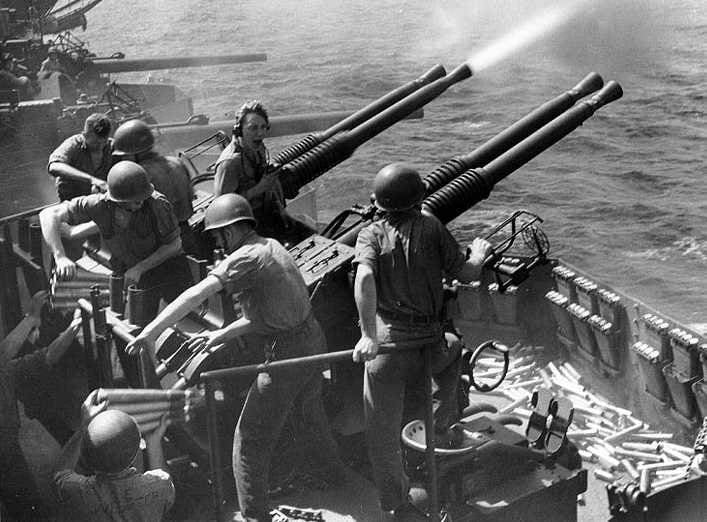
But the fact is that the commission in the USSR did not compare the 61-K with the American Bofors, which, in fact, had nowhere to take from - it was either a "purebred" Swedish Bofors, on the basis of which, in fact, the USSR and led the development of 61-K, or about a certain trophy, which, more than likely, was inferior to the American and English versions of this artillery system. And the “basic” “Bofors”, quite likely, really did not have any significant superiority over the 37-mm machine gun 61-K.
70-K criticism
Here, perhaps, the tone was set by the famous author of many works devoted to artillery, A. Shirokorad. So, his first claim is that in the USSR the army and naval calibers of rapid-firing artillery were unified. The logic here is this: firstly, the larger the caliber, the greater the combat capabilities of the anti-aircraft machine, but at least in range and reach. But in the production of MZA for the army, one has to reckon with the need for savings: after all, we are talking about many thousands, and in the case of war - about tens of thousands of barrels. At the same time, fleet requests are much more modest, and the objects of protection - warships - are very expensive, and it was completely not worth saving for them on the MZA caliber.
All this is absolutely sound reasoning, but let's approach the issue from a different perspective. After all, work on the 49-K lasted until the very 1940, the gun was put into service and ready for transfer to mass production. But if we look at its performance characteristics more closely, then, strangely enough, we will see that this 37-mm artillery system did not have a particular advantage over the 61-mm 45-K. That is, of course, 49-K was much more powerful, sending a shell weighing 1,463 kg with an initial speed of 928 m / s, while 61-K was only 0,732-0,758 with an initial speed of up to 880 m / s. But you need to understand that the fragmentation effect of both shells was insignificant, and they could disable an enemy aircraft only with a direct hit, and the 37-mm shell could handle it a little worse than the 45-mm. And to ensure this direct hit could be primarily due to the density of the "swarm" of shells, that is, due to the rate of fire. So, if you take the rate of fire of the 37-mm 61-K and 45-mm 49-K, then they do not seem to differ much, making up 160-170 rounds / min for the first artillery system, and 120-140 rounds / min for the second. However, the same A. Shirokorad gives interesting data on the working rate of fire: 120 rds / min for 61-K and only 70 - for 49-K. That is, in practice, the 61-K turned out to be almost twice as fast, and this parameter, for obvious reasons, is extremely important.
And again - it is possible that from 49-K it was subsequently possible to obtain a much higher rate of fire, which, in fact, was demonstrated by the Bofors of England and the USA. But the question was that the Soviet Navy experienced a complete failure in terms of equipping the MZA, anti-aircraft guns were needed not even “just yesterday”, but “many years ago”, and wait until the designers finalized something there (and finalized whether, given the number of people who did not go into a series of anti-aircraft machine guns in the 30 years?) would be a real crime. Again, it was not necessary to be Nostradamus in order to anticipate the difficulties with the parallel production of machine guns of two different calibers, especially taking into account the fact that thousands of orders of the Red Army at the factory number 8 will be in clear priority over much more modest naval ...
Thus, it can be stated that, although theoretically, of course, it would be correct for the fleet to use 45-mm anti-aircraft machines, but in real conditions 1939-40 years. this theory could not be confirmed by practice and the adoption of the 37-mm artillery system was completely justified.
Another claim of A. Shirokorad is much more thorough. The fact is that the 70-K, which, by analogy with the 61-K, was air-cooled, experienced overheating of the barrel after about 100 rounds fired continuously. As a result, according to A. Shirokorad, it turned out that an effective 70-K battle could take place for a minute or two, and then it was necessary either to change the trunk, which took at least a quarter of an hour, or to declare a half hour smoke break until the barrel cools down.
The numbers seem to be scary, but the whole point is that, speaking of 100 shots, it means a continuous queue, and thus from an automatic weapons nobody shoots. The Kalashnikov assault rifle is universally considered the recognized standard of reliability for automatic weapons, but by shooting from it continuously for a minute and a half in a row, we will still spoil it. Automatic weapons are fired in short bursts, and in this mode the 70-K could work much longer than “less than a minute” announced by A. Shirokorad.
Nevertheless, A. Shirokorad is absolutely right that water-cooled for a sea anti-aircraft machine is required. Why didn’t they do it for 70-K? The answer is obvious - the reason was that all conceivable deadlines for providing the MZA fleet came years ago. In fact, at the end of the 30 of the last century, the RKKF was defenseless against modern planes of our potential opponents. Admirals simply did not have the right to delay the supply of MZA to the fleet in anticipation of more advanced artillery systems - and one should not think that the lack of water cooling is a consequence of dizziness or incompetence. In the end, the technical design of B-11, which is the “70-K of a healthy person,” that is, a double-barreled 37-mm water-cooled installation, was created in 1940.
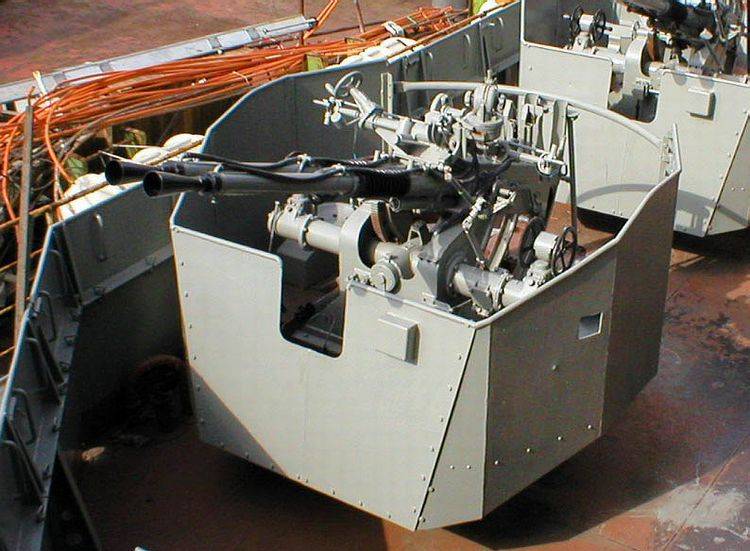
But during the war there was no time for specialized naval equipment, so the B-11 was adopted only in the 1946. But the 70-K during the war, our fleet received the 1 671 installation, and they, in fact, “pulled out on itself "air defense of ships at sea.
To be continued ...
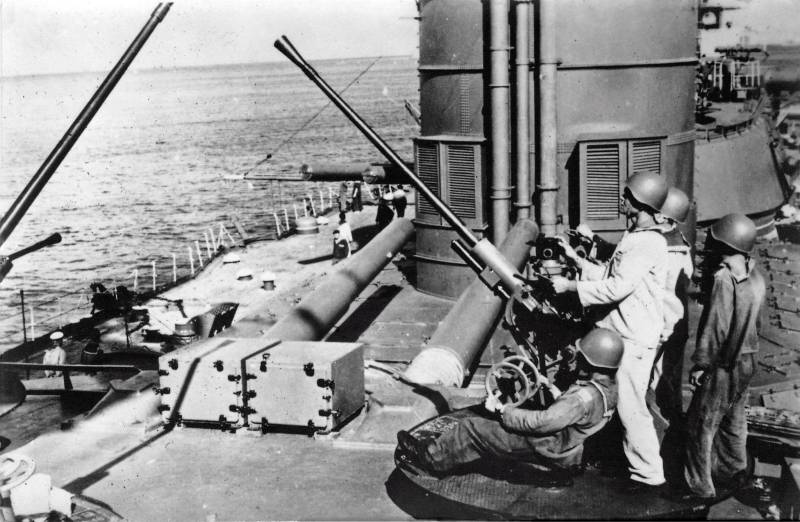
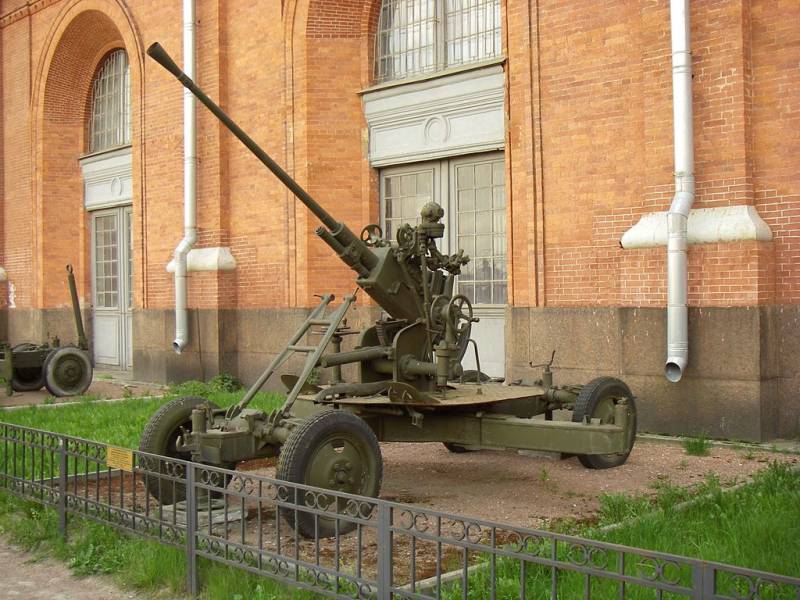
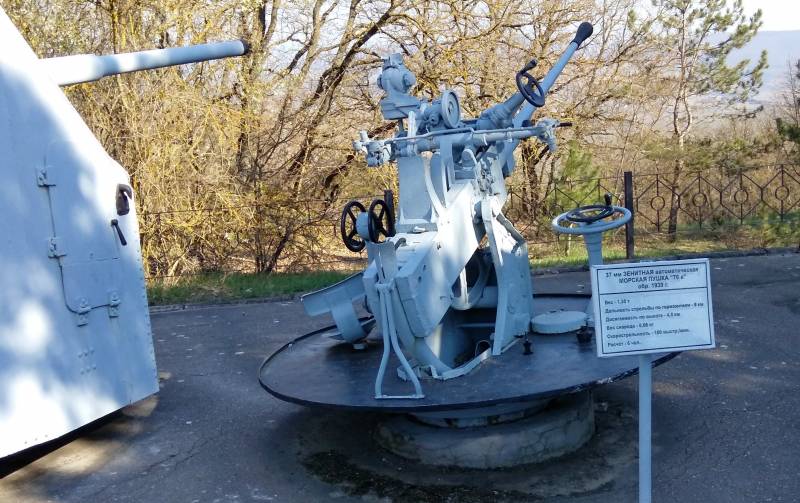
Information